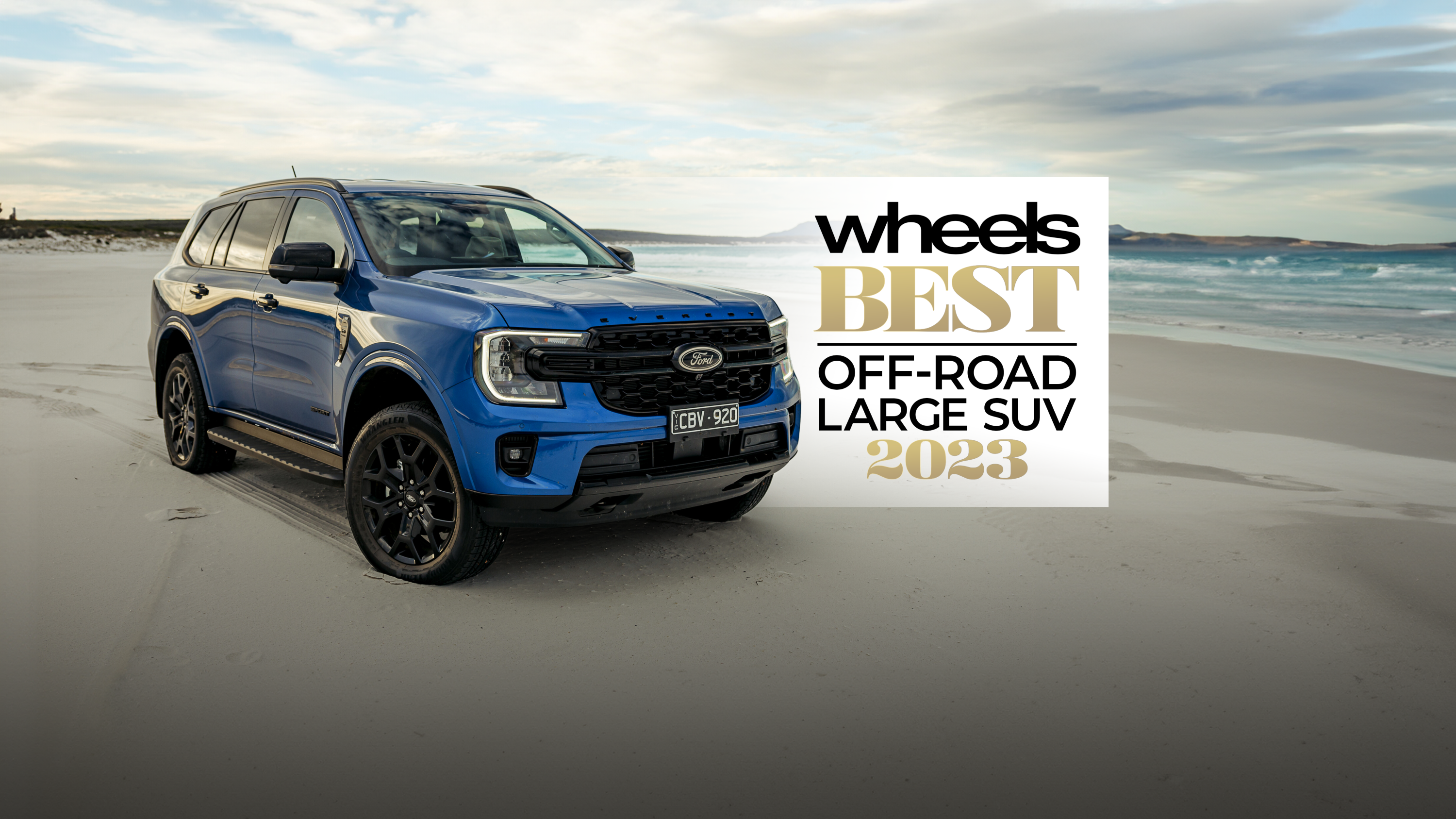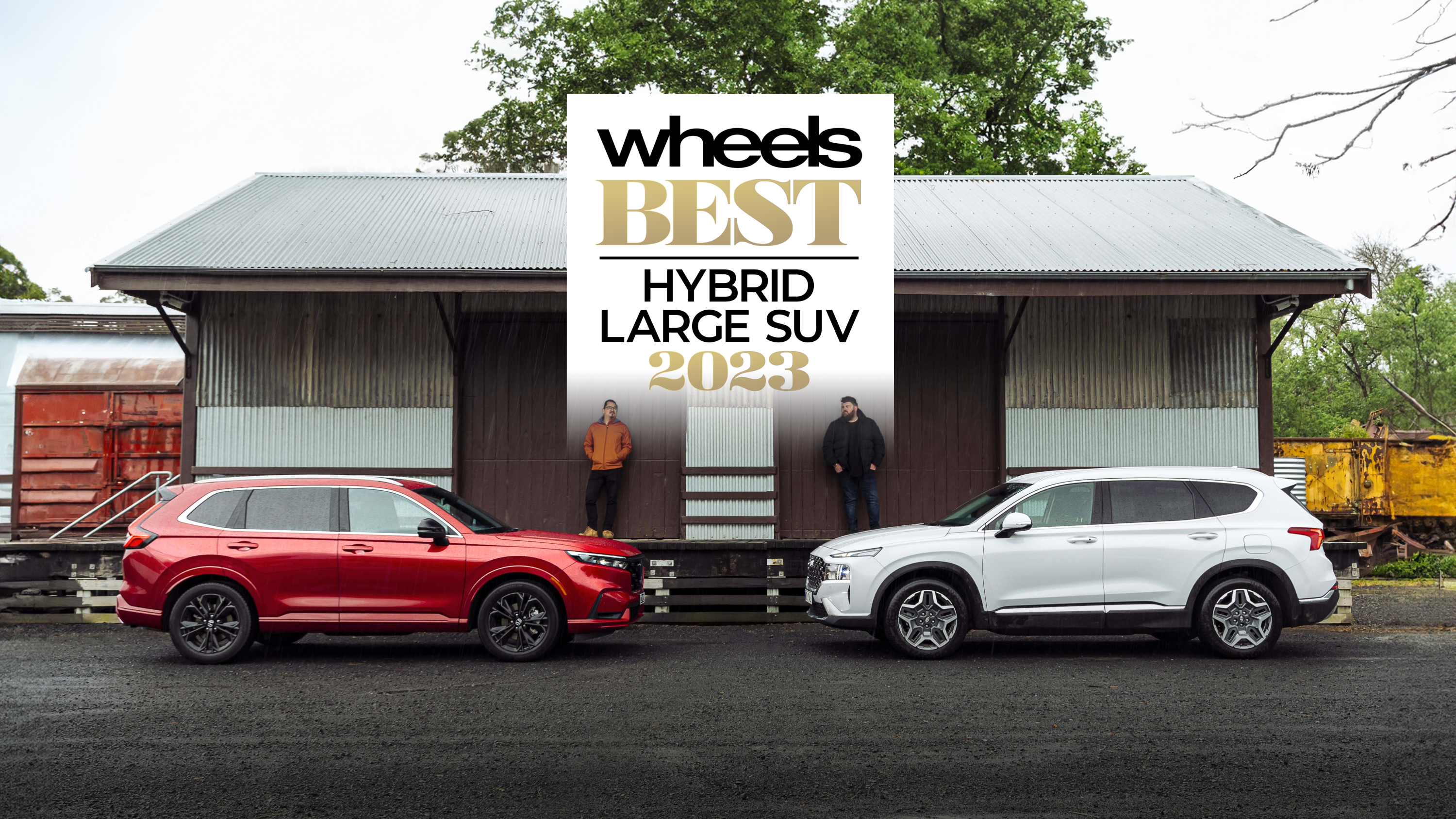
Like an unplanned addition to a family, the arrival of the ZR-V has created a few changes in the house of Honda.
Sized above the compact HR-V at close to 4.6 metres long, the first-ever ZR-V is a natural size rival for the Mazda CX-5 and Volkswagen Tiguan and consequently squeezes a figurative bunk bed into the CR-V’s bedroom.
Honda’s mainstay midsize SUV will have to learn to share its space with its newest sibling. Except the CR-V has been making moves of its own.
An all-new sixth-gen CR-V sees it get a growth spurt in length, width, wheelbase, equipment, capability and price – meaning it now straddles the Medium- and Large-SUV segments.
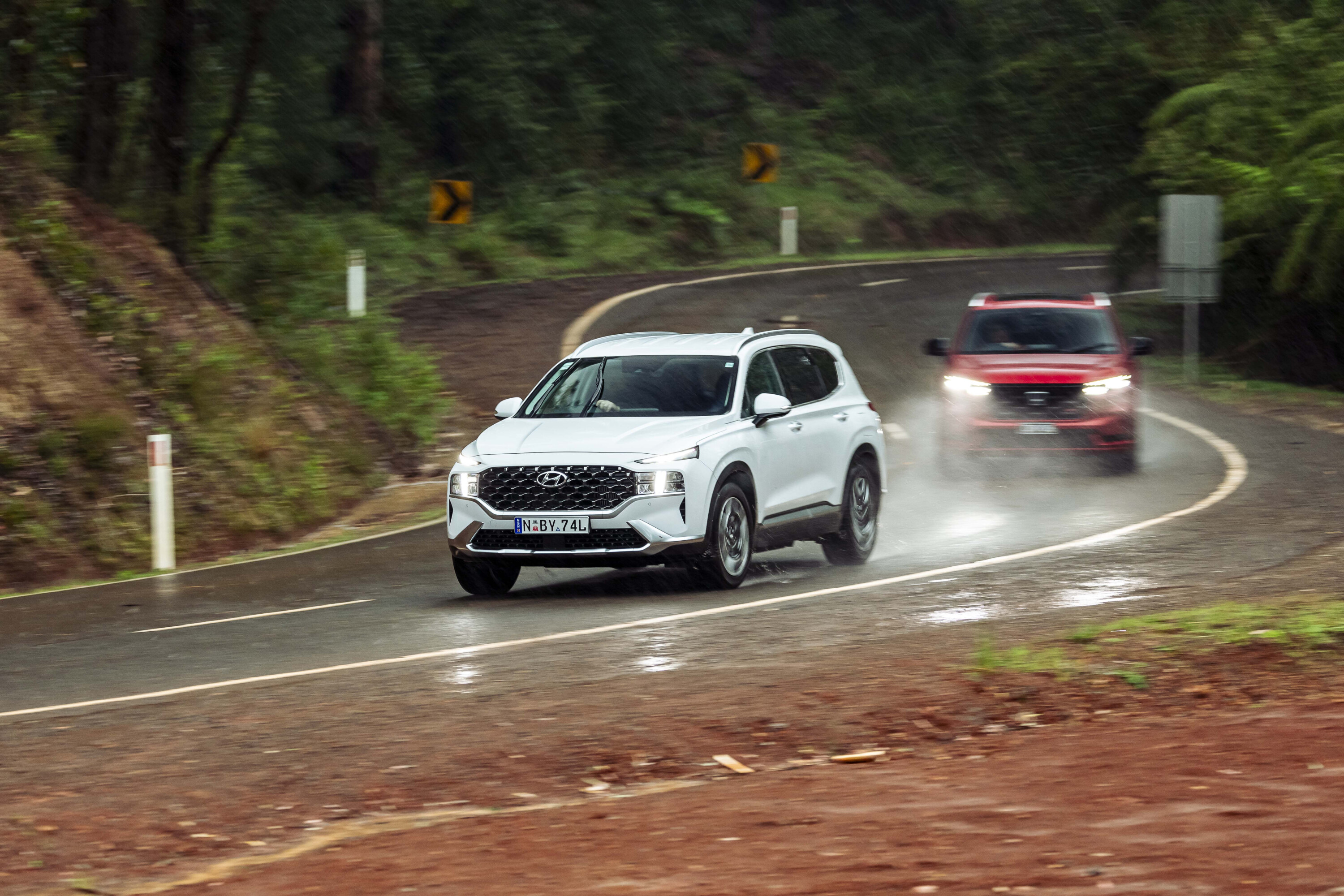
The cost of entry is now up by $8600, but the range offers more by default – pure atmo engines are gone, the range now powered by either 1.5-litre turbo or 2.0-litre petrol/electric hybrid powertrains (the latter only available in flagship RS trim).
And with the new CR-V’s footprint now within mere millimetres of Mitsubishi’s Outlander, another vehicle that truly tests the boundaries of what ‘midsize’ means, could Honda’s once-traditional midsizer hold its own against traditional large SUV stalwarts?
With the petrol/electric powertrain also being new territory for the CR-V in Australia, we took the opportunity to examine whether this box-fresh Honda is the David to a similarly-positioned L-SUV Goliath: Hyundai’s Santa Fe hybrid.
(If you’re wondering why a Toyota Kluger Hybrid or Kia Sorento Hybrid aren’t featured here… Well, the Kia beat the Toyota in a previous comparison test, while a petrol-electric Sorento test car wasn’t available ahead of an impending update to the Korean large SUV.)
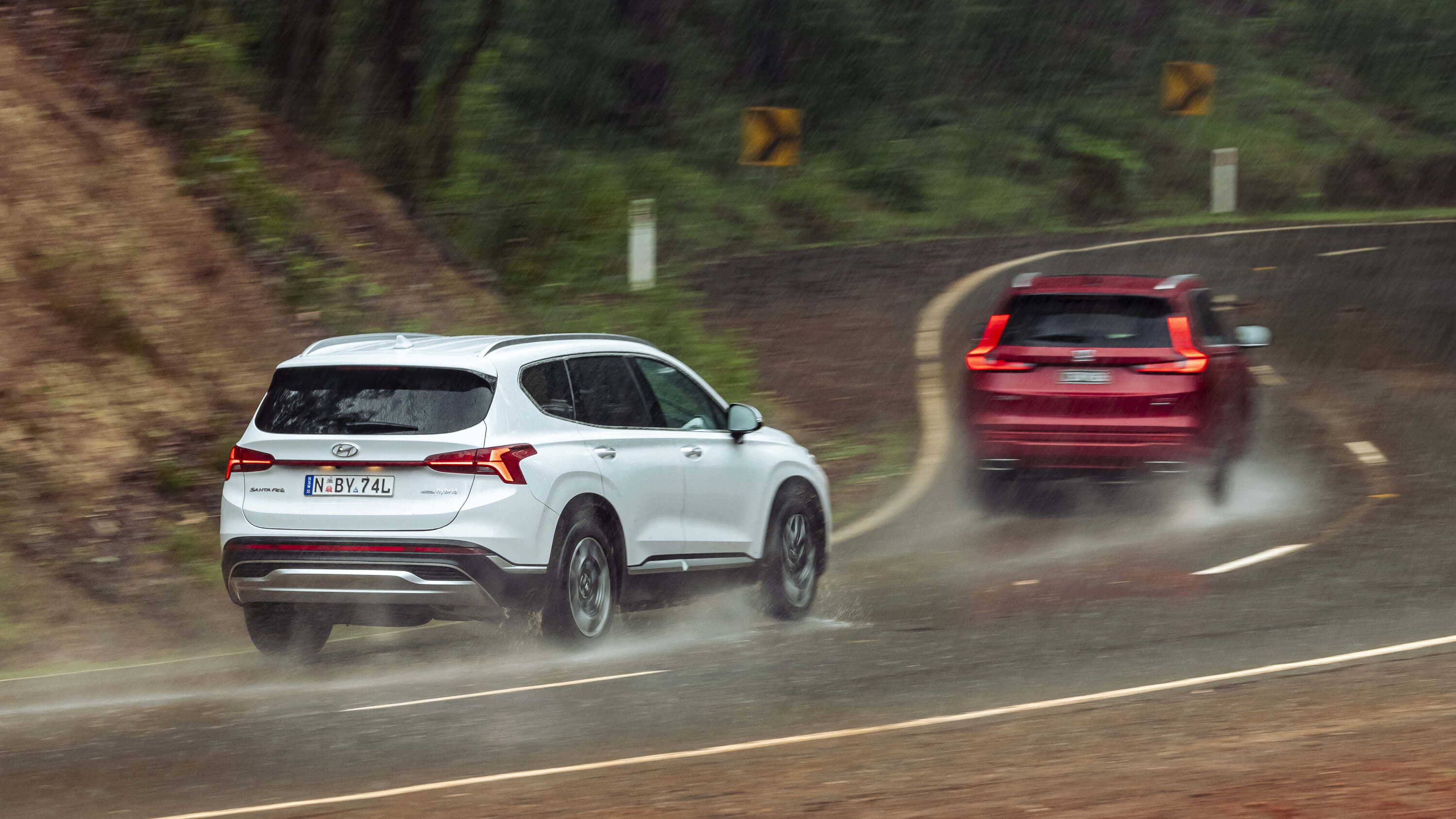
JUMP AHEAD
- How much are they, and what do you get?
- Interior comfort, space and storage
- What are they like to drive?
- How are they on fuel?
- How safe are they?
- Warranty and running costs
- VERDICT
How much are they, and what do you get?
The Honda has an edge from the get-go. The Santa Fe hybrid retails for $63,000 in the mid-tier Elite grade we have here, while the top-spec CR-V RS e:Hybrid carries a $59,900 drive-away sticker.
Then again, given the size differences it’s not quite an apples-to-apples comparison to begin with – particularly as the 8cm-longer Santa Fe packs a third row of seats, while the range-topping CR-V RS is strictly a five-seater (seven-seat CR-V variants are available lower in the range).
There are also some equipment shortfalls in the Honda: the CR-V’s infotainment screen is 9.0 inches across versus the Hyundai’s 10.25, and while the RS grade scores a bright and crisp 10.2-inch digi-dash, the Santa Fe Elite trumps it again with a 12.3-inch driver display.
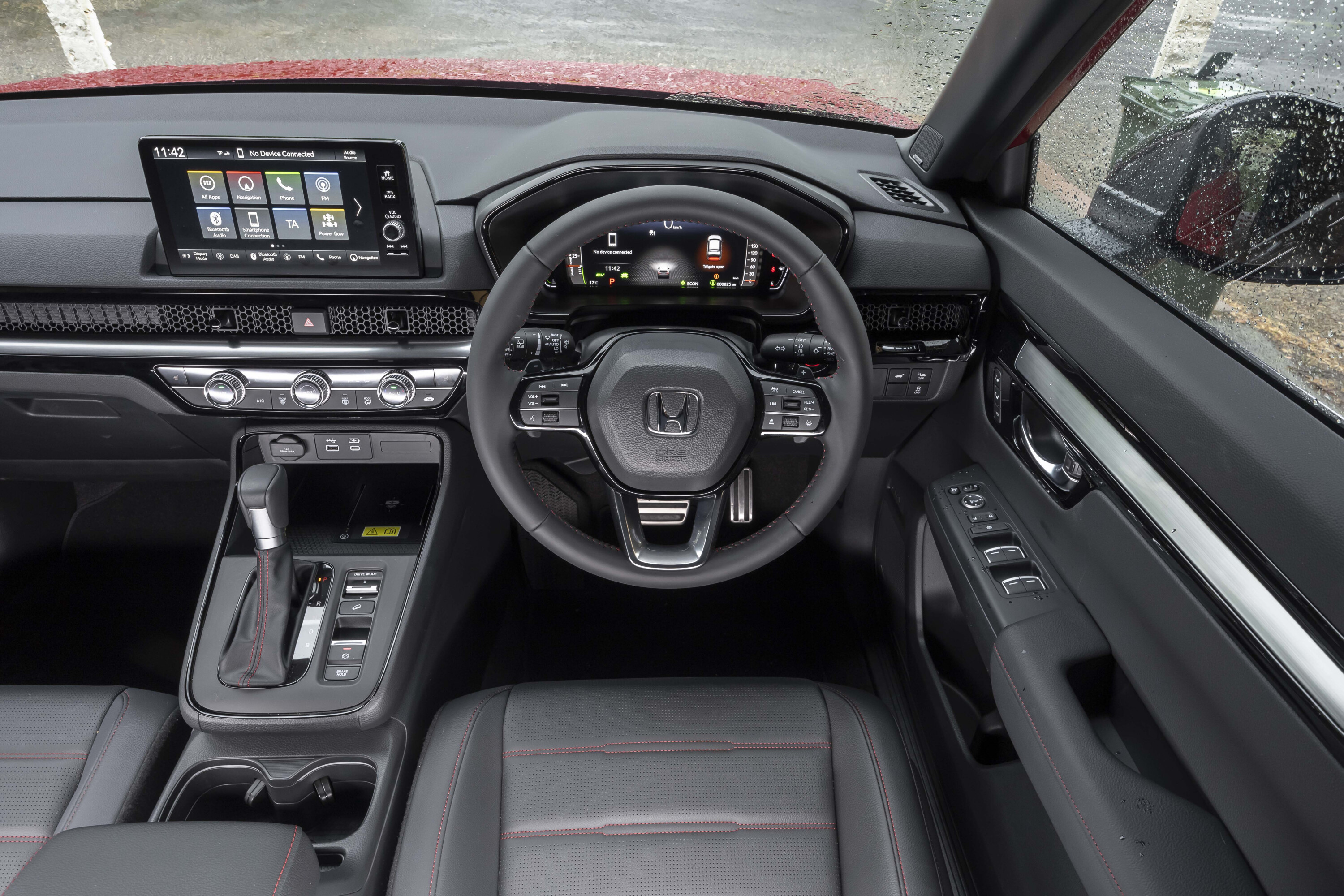
But the Santa Fe is showing its age, with a new-generation model due next year.
There are only USB-A jacks in its cabin – two up front, three in the rear – while the Honda provides three more modern USB-C connections in addition to a single USB-A.
The CR-V also has a panoramic glass sunroof and a 12-speaker Bose audio, which pips the 10-speaker system in the Santa Fe and sounds better too.
In other respects, there’s significant commonality. Both have heated front seats, climate control, power-operated tailgates, built-in sat-nav, adaptive cruise control, 19-inch alloys, wireless phone chargers and wireless Apple CarPlay (but only wired Android Auto).
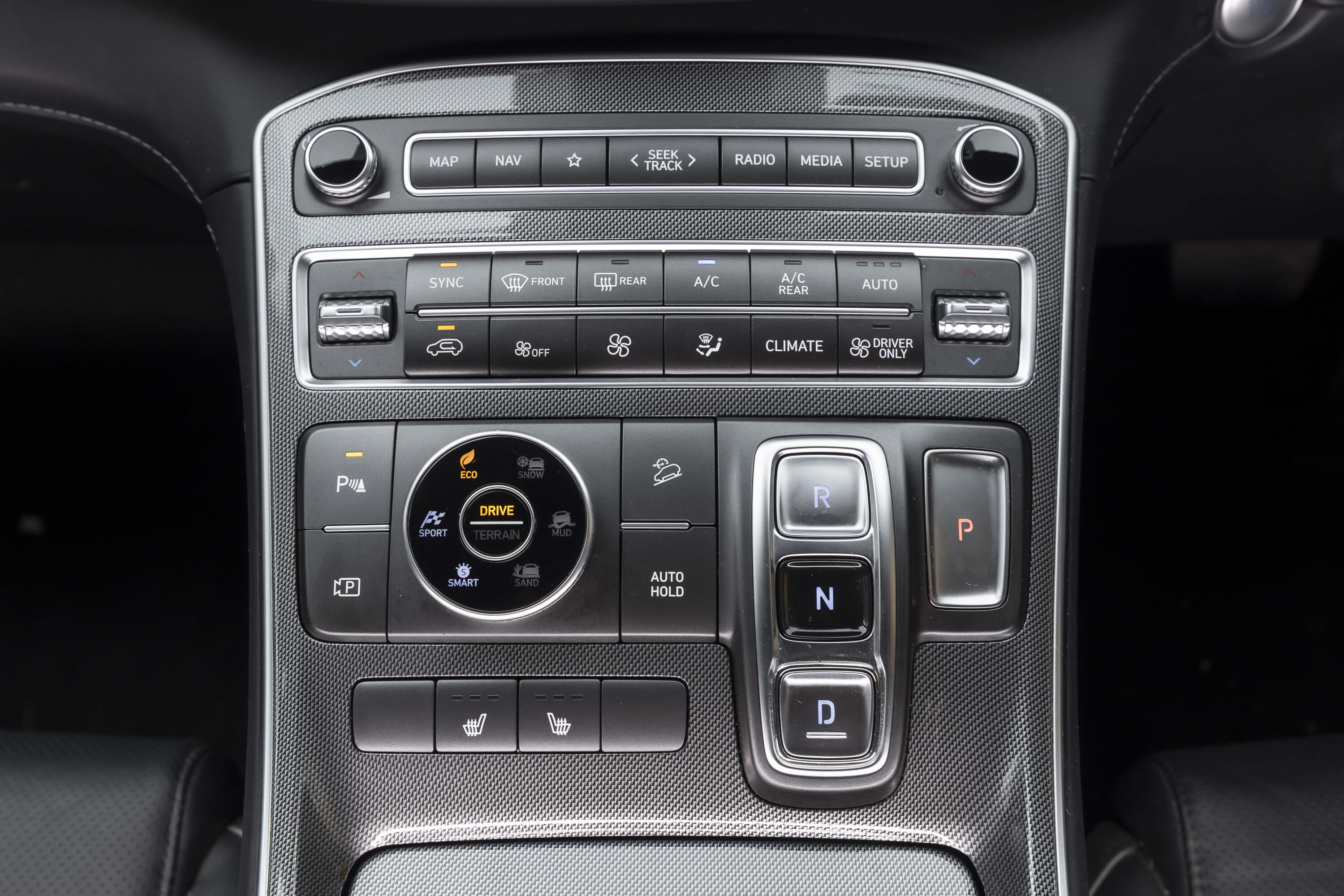
Interior comfort, space and storage
The Santa Fe, with its longer wheelbase, wider cabin and additional row of seats, gets the gong for pure passenger-carrying capability. No great surprise there.
There’s also a greater utilisation of the space available, with a handy mid-dash shelf and an under-console cubby for stashing small things, as well as integrated retractable sunshades in the rear doors. What the Honda does, however, is provide a better way of transporting people than the Hyundai.
The qualitative difference between the two is vast, with the fancier furnishings of the Honda holding greater tactile and visual appeal than the shiny polymers of the Santa Fe’s cabin. And while the seats may appear flatter in the Honda, their cushioning conforms better and provides a more natural, comfortable posture.
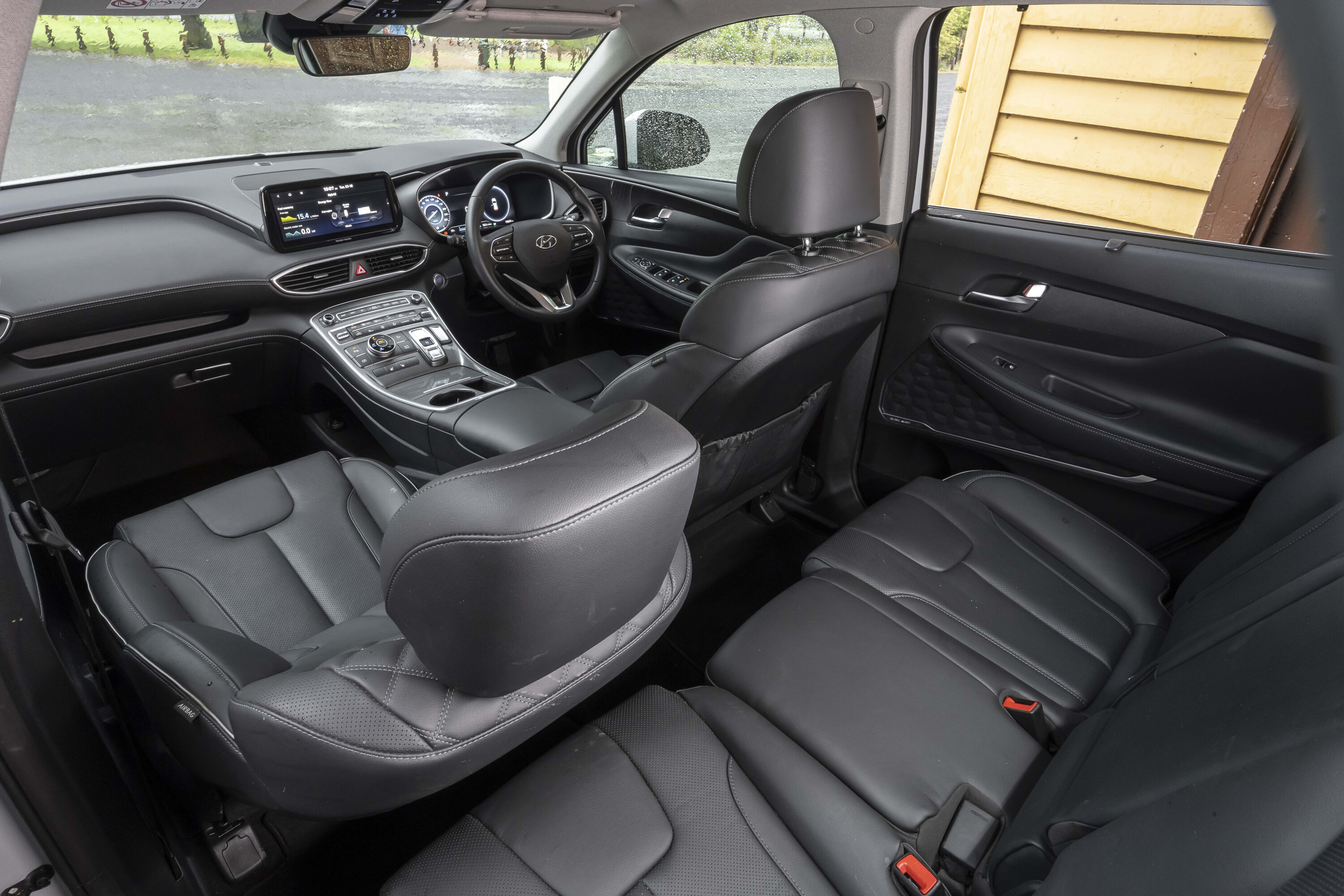
The Santa Fe also feels weirdly constricting up front, its high centre console propping up your elbow while your inboard knee kisses the console’s vinyl padding.
The Honda, with more clear air between the front seats, feels more commodious as a result (though that stick shifter just takes up space and would be better replaced with something lower-profile).
The CR-V’s rear seat now benefits from fore-aft sliders, giving additional flexibility when it comes to carrying passengers and cargo. Racked all the way to the rear, there’s also stacks of legroom to enjoy, as well as abundant headroom and plenty of light when the sunroof’s fabric shade is retracted.
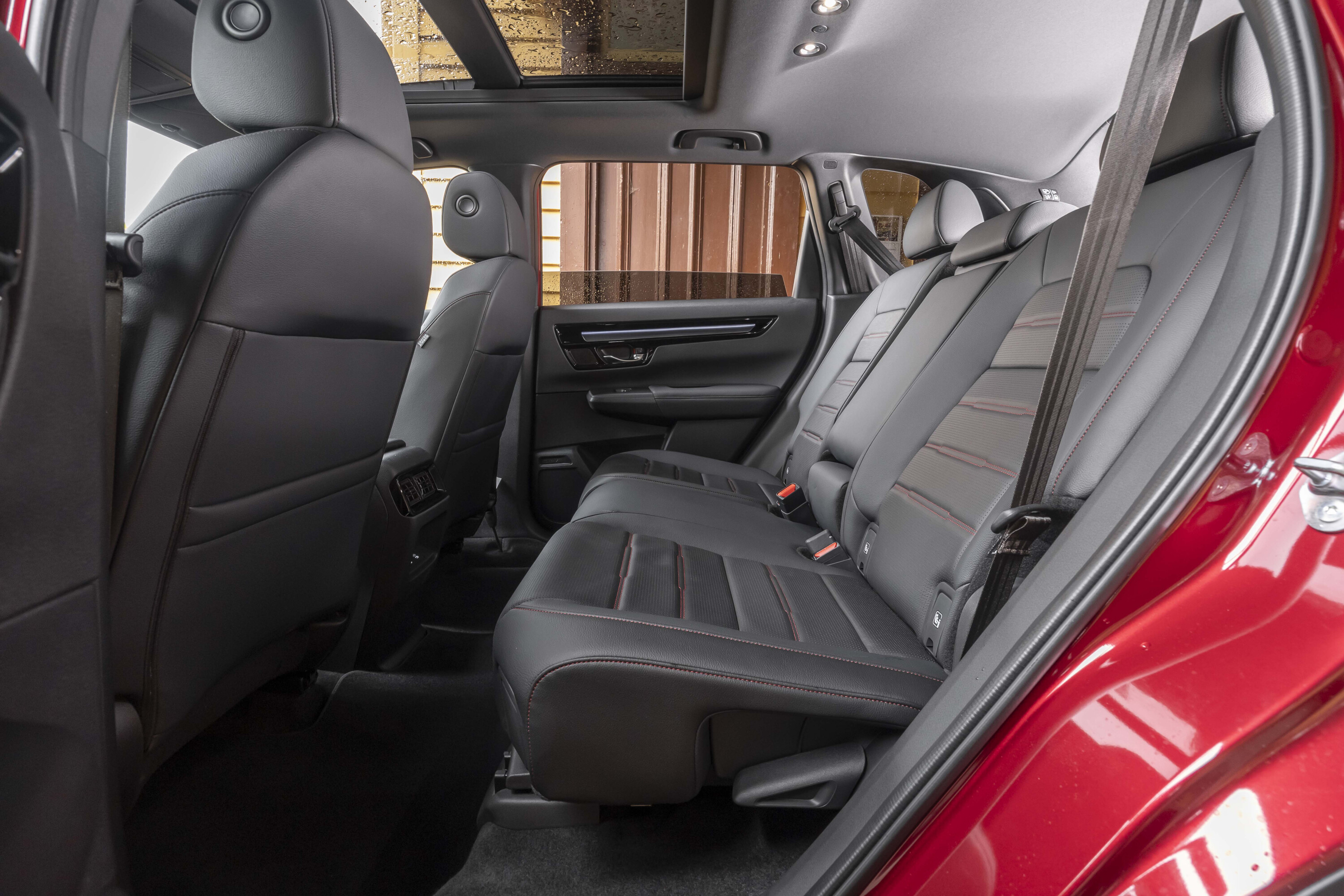
However, for more than two adults it’s a bit squeezy – the Santa Fe, owing to its greater cabin width, simply provides more room across its rear bench.
The Hyundai also provides a top tether for its middle seat as well as the outboard positions – the narrower CR-V only has the outer two seats so equipped.
So the CR-V is a dud for families, then? Not exactly. While its child seat capability isn’t as generous as the Santa Fe and the RS grade lacks a third row, the CR-V’s rear doors open almost to 90 degrees from the body, while the Hyundai’s doors stop well short.
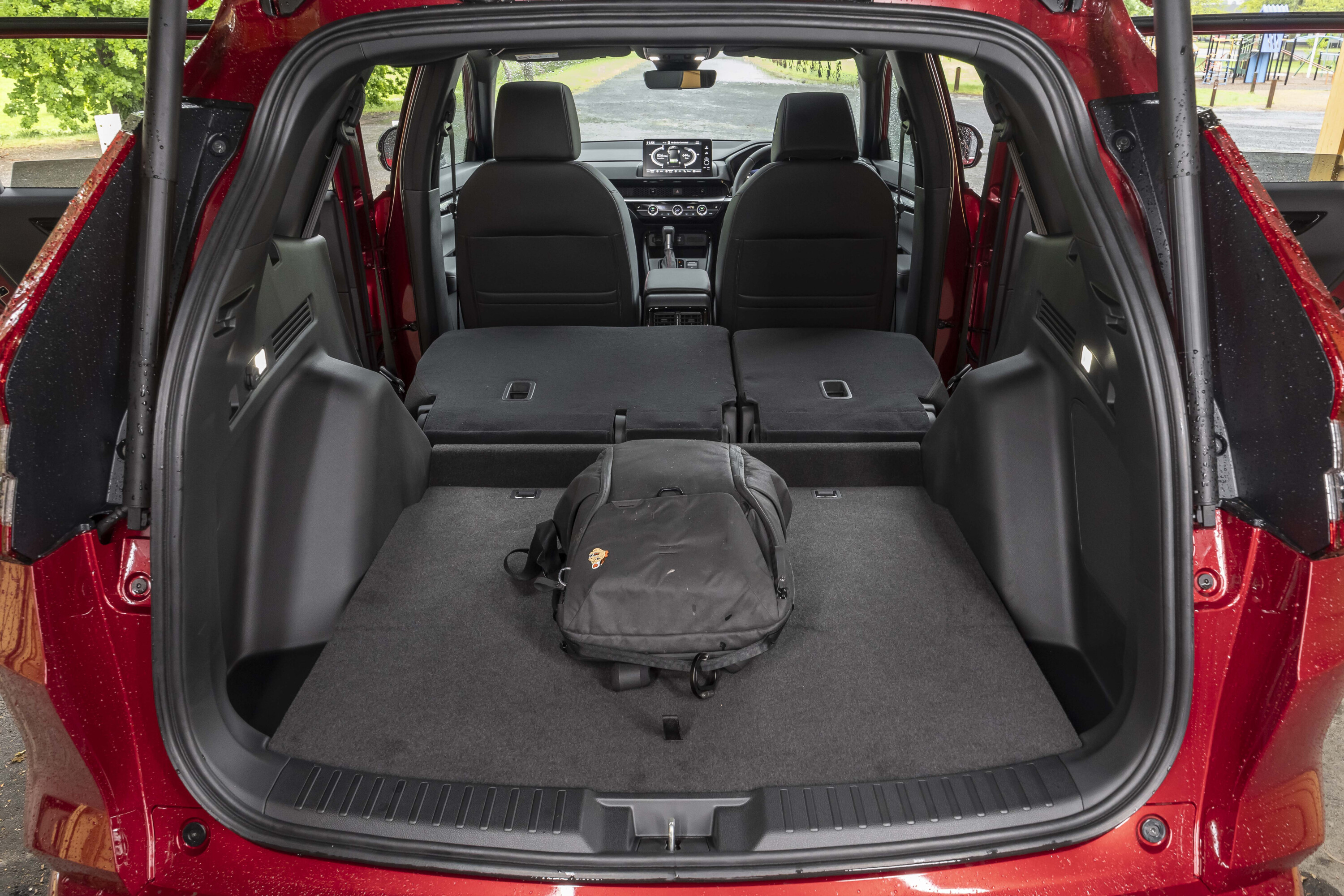
It’s a feature that may be overlooked by many (and isn’t really mentioned in Honda’s marketing material), but coupled with a generously-sized door aperture, the Honda is definitely easier to load kids into.
Other thoughtful CR-V touches include the retractable fisheye mirror so both front-seaters can see what’s going on in the back seat, and the height-adjustable rear seatbelts.
The CR-V is also far easier to load with cargo. Thanks to its large boot opening and very low boot floor, it offers up to 589 litres with the second row in place, and 1072 litres when they’re folded down.
A prominent ramp between the boot floor and the folded down seatbacks impinges slightly on its load-taking versatility, but with the bigger Santa Fe only delivering 571L of seats-up capacity, the CR-V’s packaging is admirable.
It should, however, be pointed out that the CR-V in hybrid form has no spare tyre, while the Santa Fe slings a full-size under its boot floor.
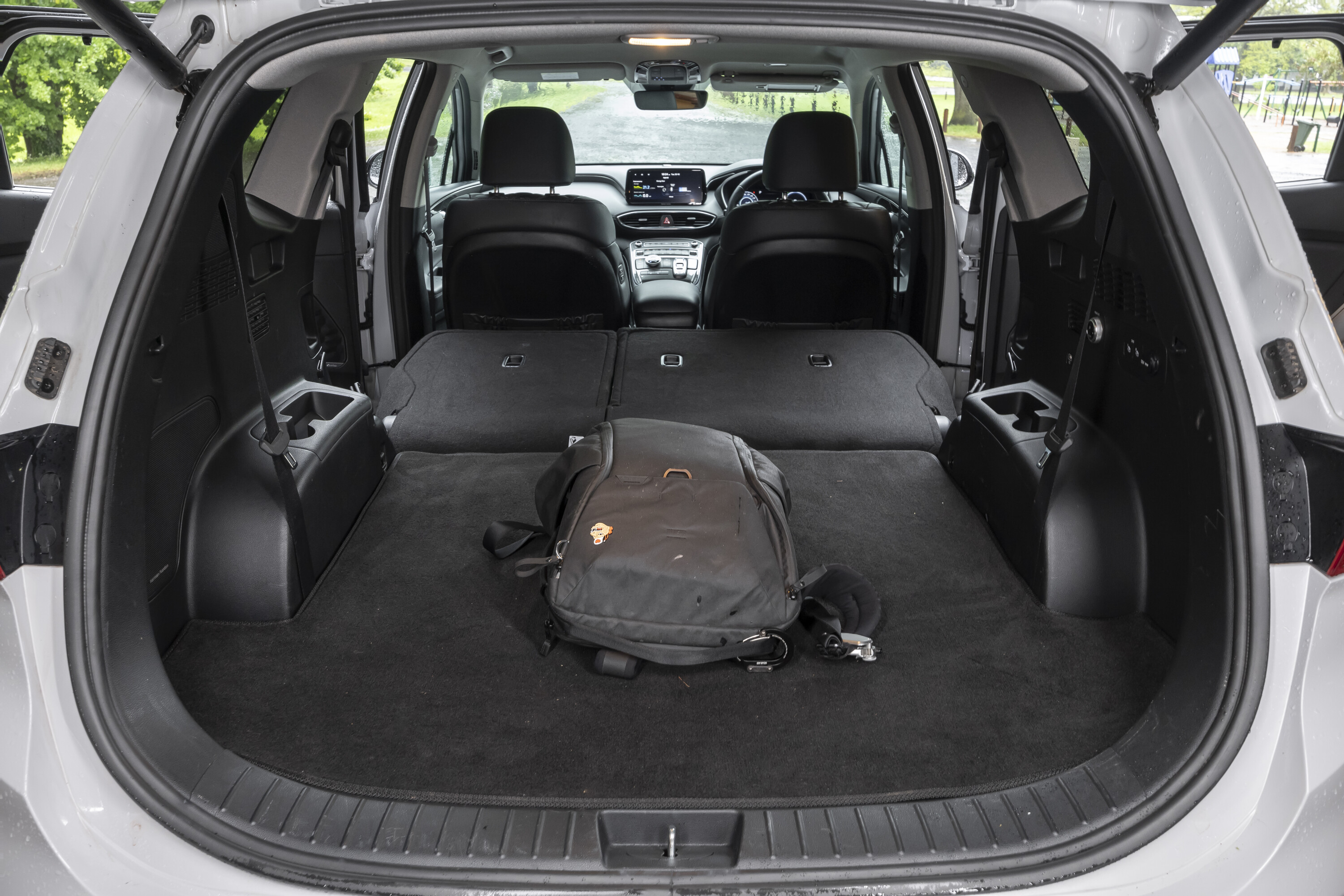
What are they like to drive?
The differences between how these two cars drive is stark, but what’s surprising is that little of it seems to be tied to their relative size and weight differences.
The CR-V, which shares its bones with the Civic hatch, feels profoundly car-like on both urban streets and mountain roads: agile, willing, and a joy to steer hard. The only thing holding it back is its FWD-only layout, which can’t put the full 152kW and 335Nm outputs of the 2.0-litre Atkinson-cycle petrol/electric powertrain to the ground cleanly if there’s a smidge of moisture or looseness.
Otherwise, with its crisp steering, supple ride comfort, excellent bump suppression and resistance to body roll and understeer, the CR-V RS is one of the most dynamically satisfying options in its segment.
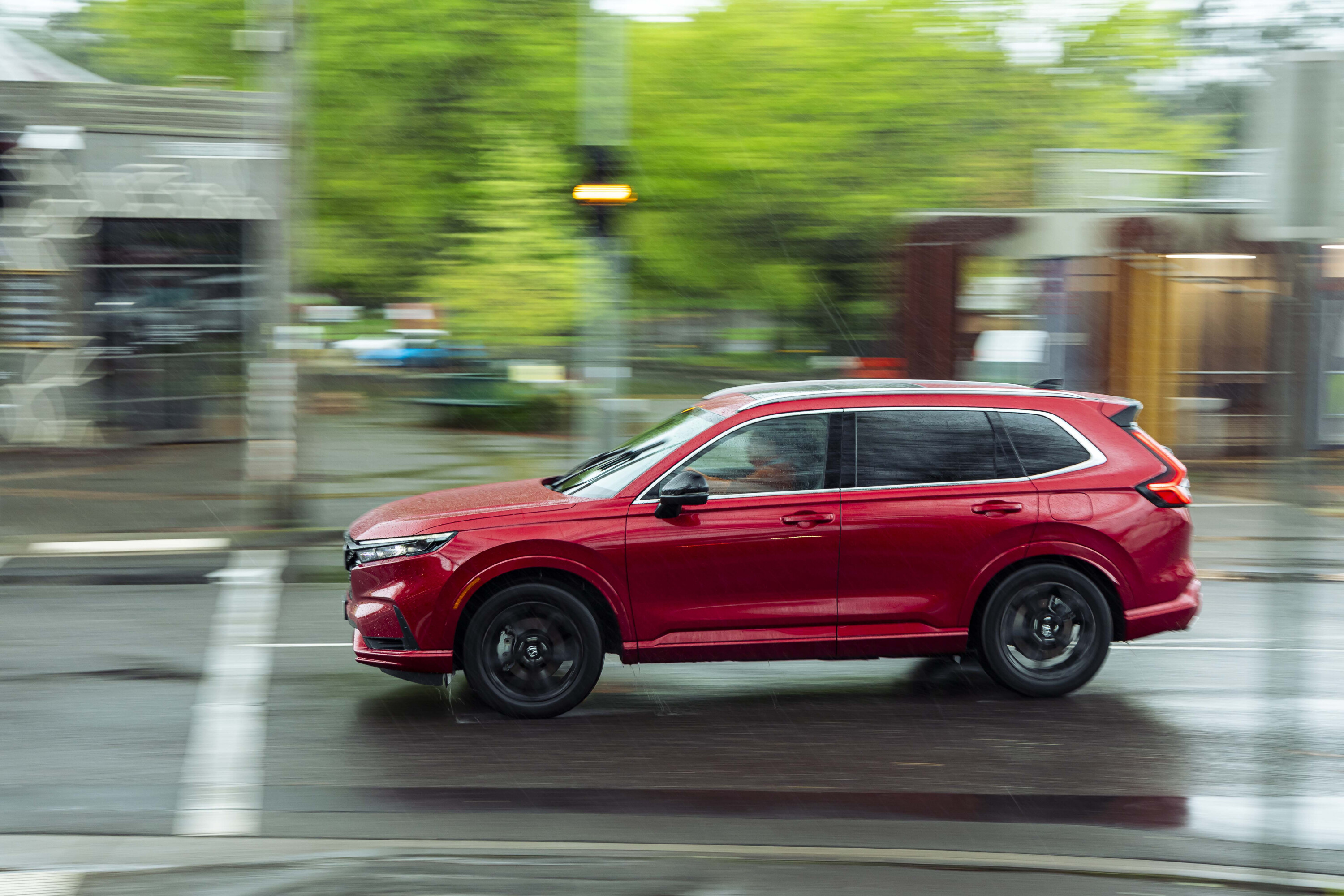
But while the CR-V RS has the versatility and dexterity of a chef’s knife, the Santa Fe hybrid is a meataxe.
With 169kW and 350Nm of combined output from its 1.6-litre turbo petrol/electric setup, and the tractive benefit of all-wheel drive, it should, on paper, at least have a straight-line advantage on the Honda.
It does, in purely accelerative terms, but it’s a ragged thing with abrupt throttle response that makes it hard to be smooth and progressive even when the drive mode dial is twisted to ‘Eco’.
The ride also has a harshness to it that wasn’t expected, given its Continentals have the exact same sizing as the CR-V’s Michelin Latitude Sport 3s, but a peek at the tyre placard shows the Hyundai needs to run higher pressures all round – in excess of 40psi, even – which explains the stiff response to sharp-edged bumps.
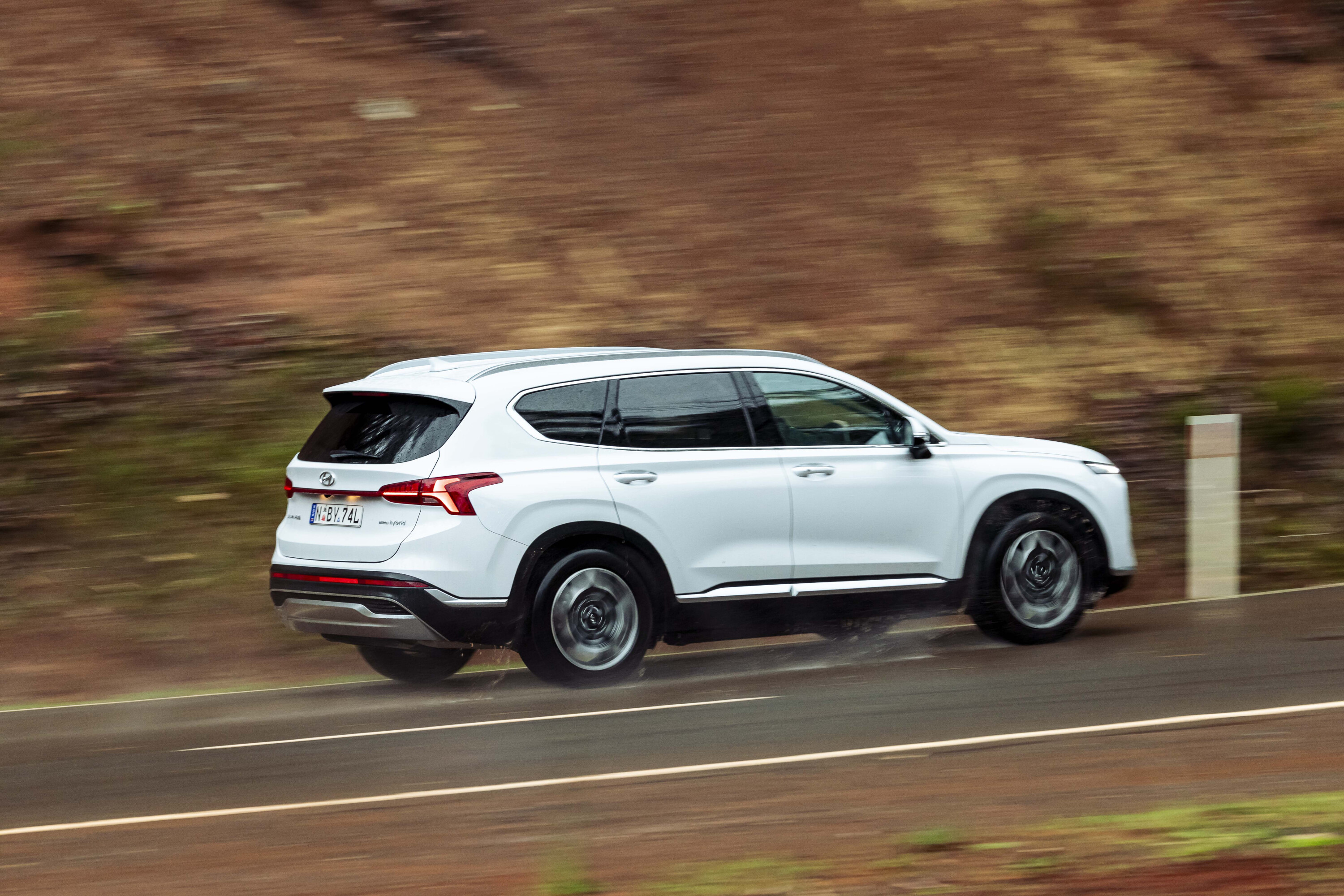
How are they on fuel?
Put to the same 100km urban/highway economy loop, the Honda and Hyundai hybrids returned averages of 5.1L/100km and 6.0L/100km respectively.
Both of those results are good, considering the factory claims of 5.5L/100km for the CR-V RS e:Hybrid and 6.0L/100km for the Santa Fe Hybrid, but the Honda impresses more not just for its lower outright number, but also the fact it undershot its claim by a greater margin.
Both will happily run on 91RON unleaded petrol.
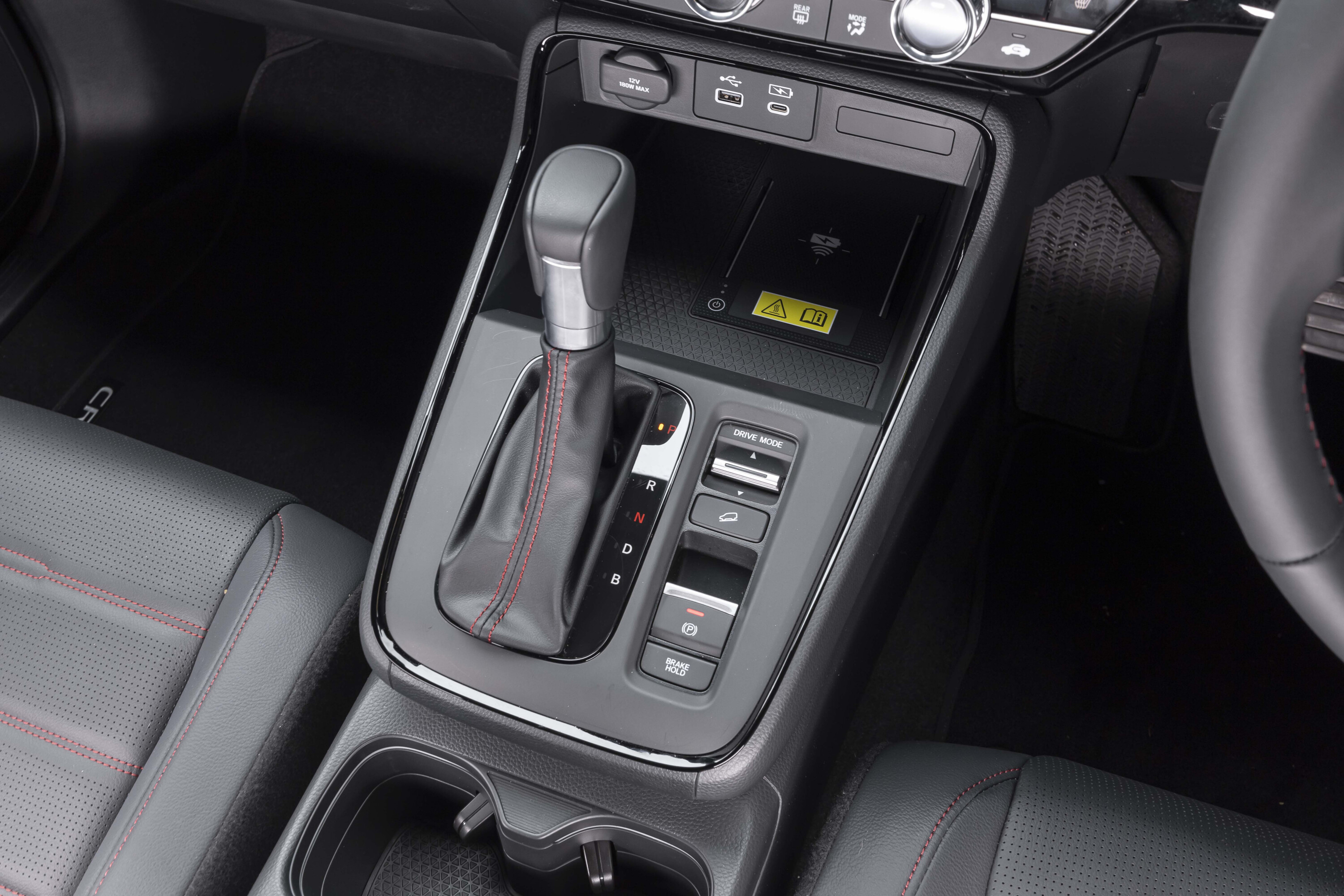
How safe are they?
While the Santa Fe sports a full five-star ANCAP rating, the box-fresh sixth-gen CR-V has yet to be rated by the Australian crash safety body.
Nevertheless, the Honda offers a broad suite of safety aids, such as active cruise control, autonomous emergency braking, lane-keep assist, blind spot monitoring, driver fatigue monitoring, and an 11-airbag fitout that also includes a centre bag between the front seats, passenger and driver knee bags, and torso-protecting side bags for the front and rear seats, in addition to the usual frontal and curtain airbags.
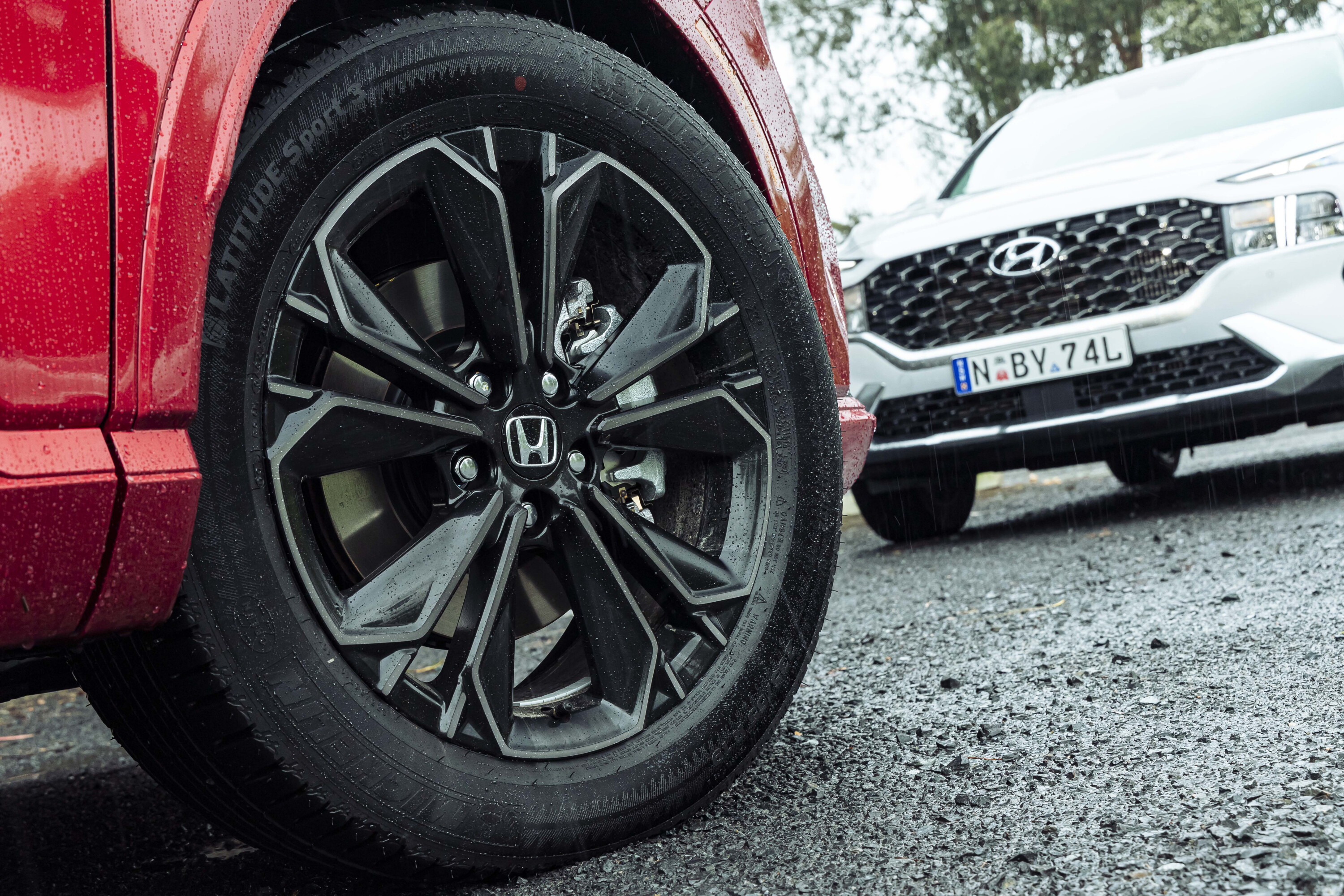
Warranty and running costs
Both the CR-V and Santa Fe are covered by a 5-year, unlimited-kilometre warranty, with the Honda also bundling in five years of free roadside assist coverage.
Hyundai offers only one year of complimentary roadside assistance, but will extend that coverage indefinitely provided you have all scheduled maintenance performed within their dealer network.
Service intervals are set for every 12 months or 10,000km for both of them, with Honda pricing the first 5 services at a flat $199 rate per visit. Contrast that with the Santa Fe Elite Hybrid’s pre-paid servicing plans that cost $1377 for three years, $1836 for four years, or $2295 for five years, and the running cost advantage – both for fuel and servicing – easily belongs to the Honda.
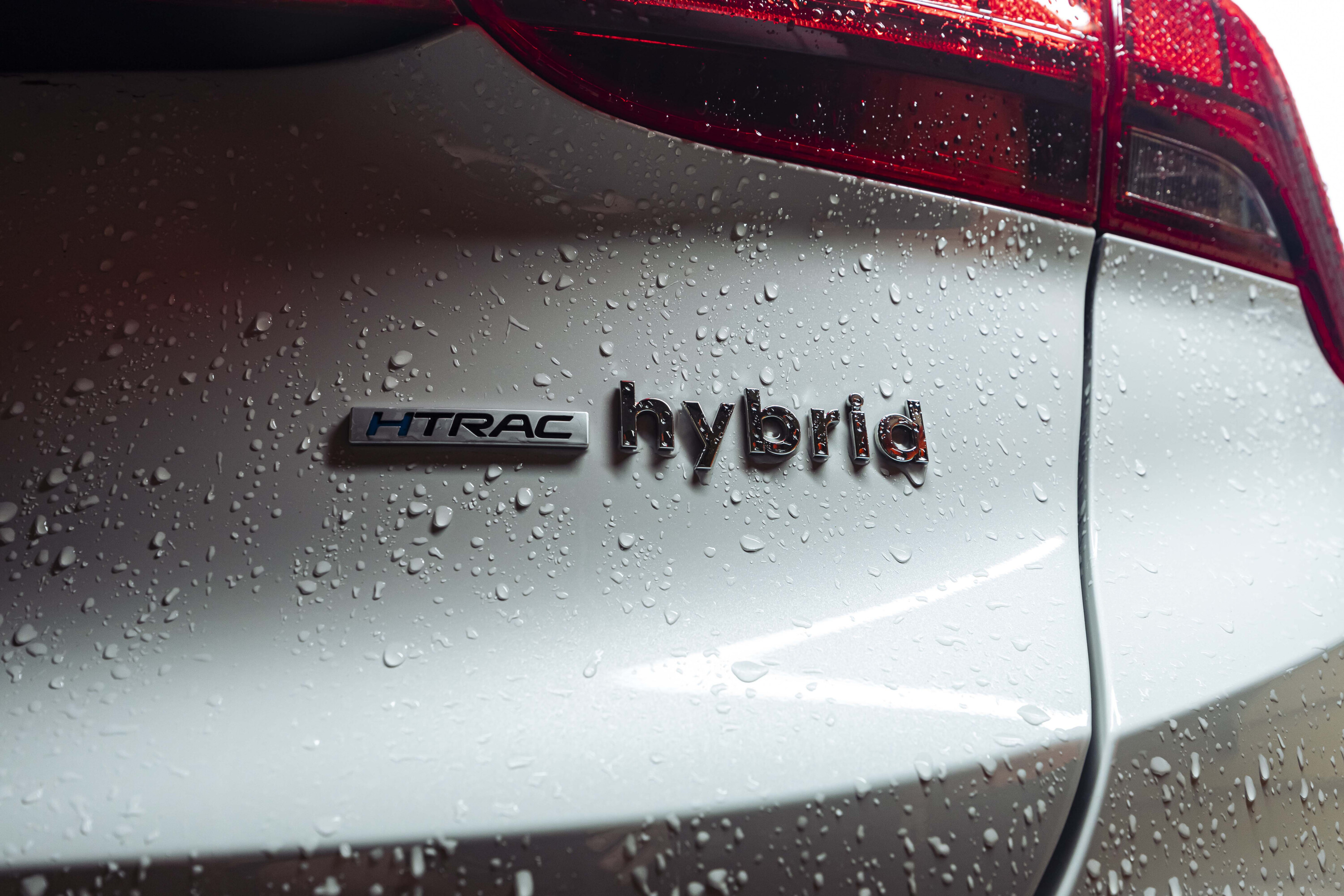
VERDICT
As with all comparison tests that have an element of asymmetry, the conclusion has caveats.
If you absolutely value space or need to transport more than four or five people on a regular basis, the choice between these two is obvious: it’s the Santa Fe. You can’t argue with the tape measure, and the Hyundai is simply the bigger thing.
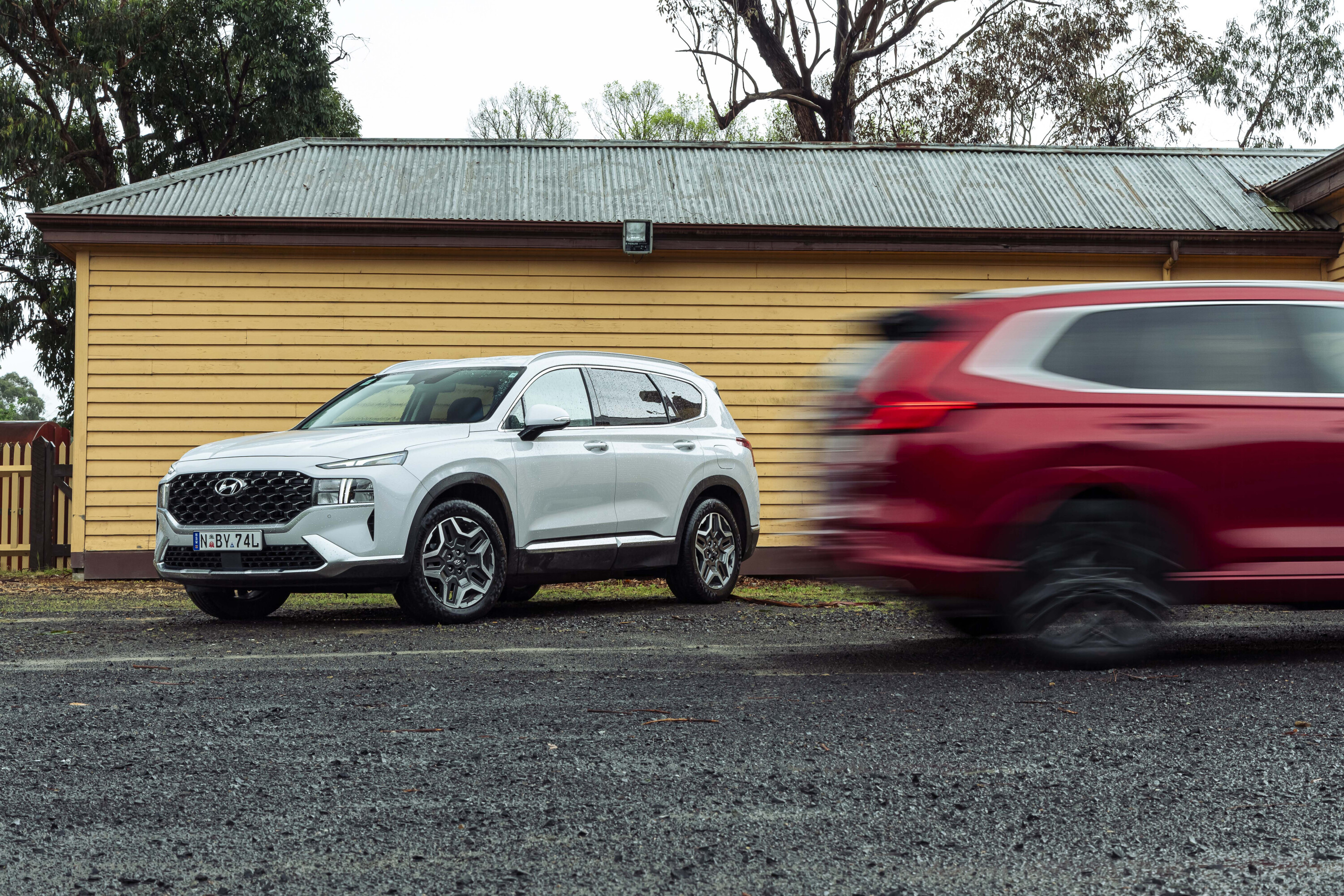
But subtract that requirement, and the rational mind gravitates to the CR-V RS.
Sure, $60K is a fair whack to spend on a vehicle that is officially classified as a medium SUV, yet far more reasonable when considered as a vehicle on the shorter end of the large-SUV spectrum.
And the CR-V’s value proposition is solid.
Above that, it provides a level of polish in its presentation and performance that isn’t present in the Santa Fe Hybrid (though the imminent arrival of the all-new next generation Santa Fe next year will arguably close that gap… if not flip it entirely).
We would also recommend checking out the MY24 Kia Sorento Hybrid from early next year, but for 2023 it’s Honda’s is-it-medium-or-is-it-large that gets our petrol-electric nod.
Just on efficiency alone – a vital aspect for any hybrid-vehicle comparison – it’s where the CR-V’s more compact dimensions that also work in its favour.
We recommend
-
 Reviews
Reviews2024 Honda CR-V review: Australian first drive
Could the all-new CR-V be the answer to Honda's prayers as it works to regain market share?
-
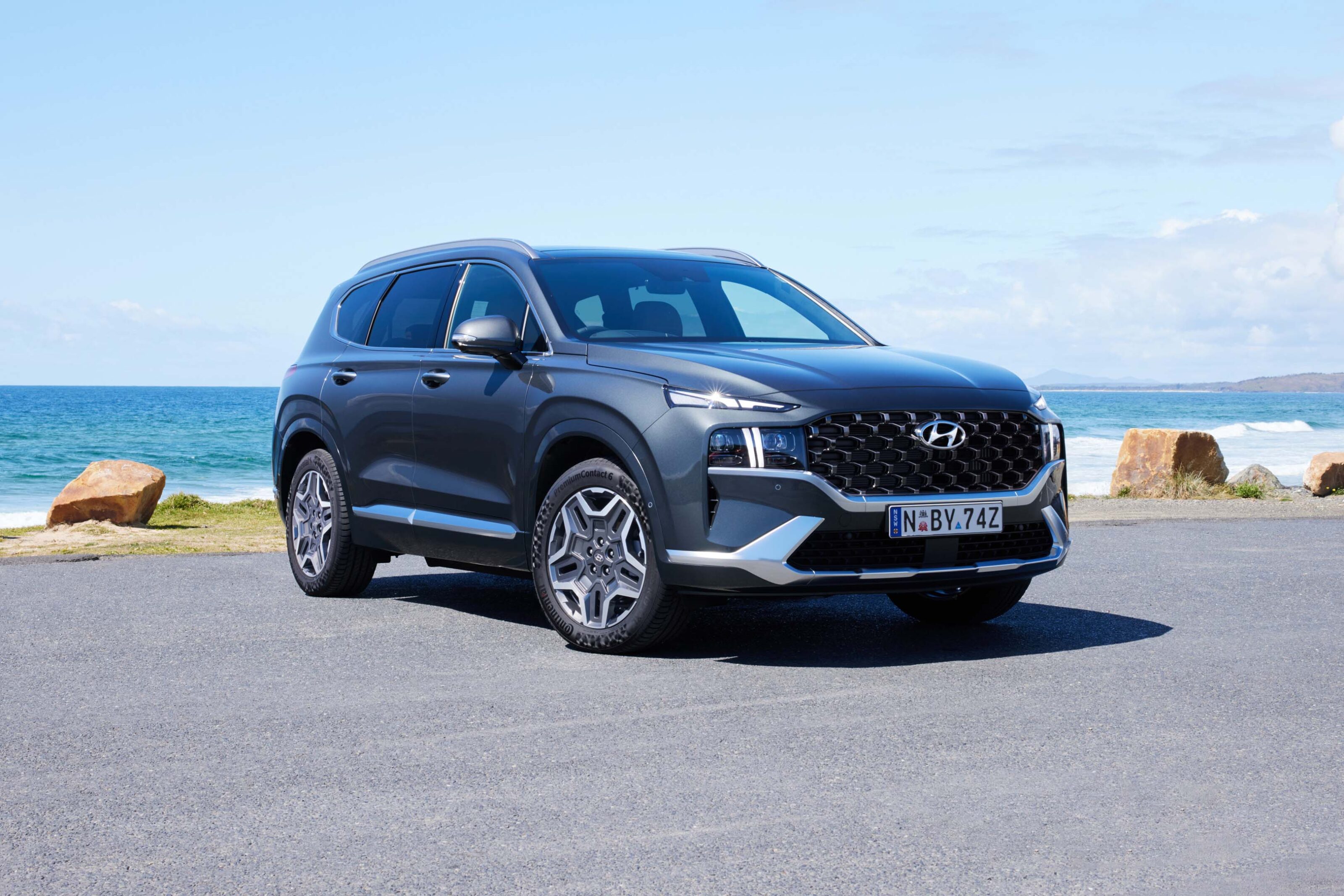 News
News2023 Hyundai Santa Fe Hybrid pricing and features
The hybrid Hyundai Santa Fe arrives in two flagship grades
-
 News
News2025 New Car Calendar: All the new cars coming to Australia
Take a look at our list of what is expected to launch in Australia in 2025 – plus those we might not see locally just yet



